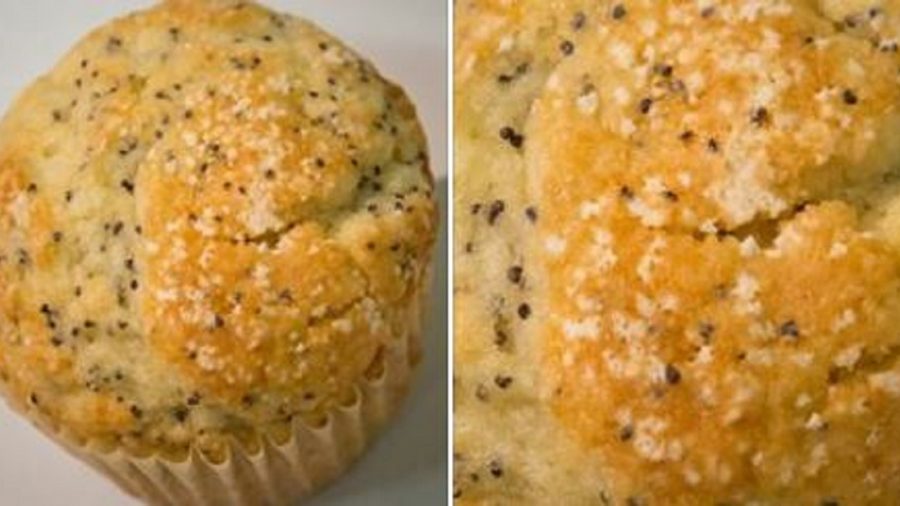The Centers for Disease Control and Prevention issued a warning about ticks this week that left some people unsettled.
The federal agency, known as the CDC, shared pictures of ticks on a muffin.
One picture showed what appeared to be a normal muffin but another picture was zoomed-in and showed that some of the dots on the muffin were actually ticks.
“Ticks can be as small as a poppy seed. There are 5 ticks in this photo. Can you spot them?” the agency stated.
The agency warned people about going outdoors during the warmer months of the year, or April through September.
People should know that ticks live in grassy, brushy, or wooded areas, or even on animals, and can latch onto people in backyards, forests, and other areas.
After walking in such areas, people should treat clothing and gear with products containing 0.5 percent permethrin. “Permethrin can be used to treat boots, clothing and camping gear and remain protective through several washings. Alternatively, you can buy permethrin-treated clothing and gear,” according to the CDC.
EPA-registered insect repellents are also useful in keeping away ticks. They include repellents that contain DEET, picaridin, IR3535, Oil of Lemon Eucalyptus (OLE), para-menthane-diol (PMD), or 2-undecanone.
Ticks also like to picnic on #MemorialDay weekend. Find and remove them safely! https://t.co/ptswP5YaQc #lymedisease pic.twitter.com/sdmQOs7A3s
— CDC Emerging Infections (@CDC_NCEZID) May 26, 2019
After coming from the outside, people should check their clothing for ticks. If dry, put the clothing into the dryer for 10 minutes to kill the ticks; if damp, wash first or dry for longer. Remember that only hot water or heat kills ticks.
Gear and pets should also be examined for ticks.
People should also shower after coming in from the outdoors, performing a full-body inspection including in and around the hair and ears, the back of the knees, and around the waist.
If people find ticks they should use tweezers to grasp the tick as close to the skin’s surface as possible and steadily pull upwards. Clean the bite area with rubbing alcohol or soap and water and place the tick in alcohol to kill it.
The CDC says that illnesses from mosquito, tick and flea bites have more than tripled in the U.S. from 2004 to 2016, with 75% of those attributed to tick-borne diseases. And 82% of the tick-borne cases were due to Lyme disease. #LymeDiseaseAwarenessMonth https://t.co/nozmi2ffCU pic.twitter.com/cDOCNvbPHZ
— LymeDisease.org (@Lymenews) May 23, 2019
Tick Season
Tick season in the northeast was expected to be more severe than last year because of the drier conditions and the mild winter.
“This tick season will definitely be much worse than last year due to the mild winter temperatures,” Jeff Deiters, owner of Mosquito Joe of Northeast Virginia, told the Fredericksburg News-Post. “It allows for many more eggs and larva to survive the cold season and grow into nymphs and adult ticks.”
Other states are also seeing more ticks and cases of Lyme disease. According to WBNS, cases of the disease in Ohio have increased from 154 in 2015 to 293 in 2018, and numbers of black-legged ticks have also been rising. The ticks carry Lyme and Rocky Mountain Spotted Fever.
“It can cause severe chronic illness and it can definitely be deadly,” entomologist Richard Gary said.
Others said that people shouldn’t worry too much besides taking the recommended precautions and actions.
“It’s just one of those nasty things that you live with and look out for, but you’re not gonna change your lifestyle,” Guy Mussey, a horticultural agent with the Virginia Cooperative Extension Service in Stafford County, told the News-Post. “If I see them on me, I pull them off, and I get on with my life.”

